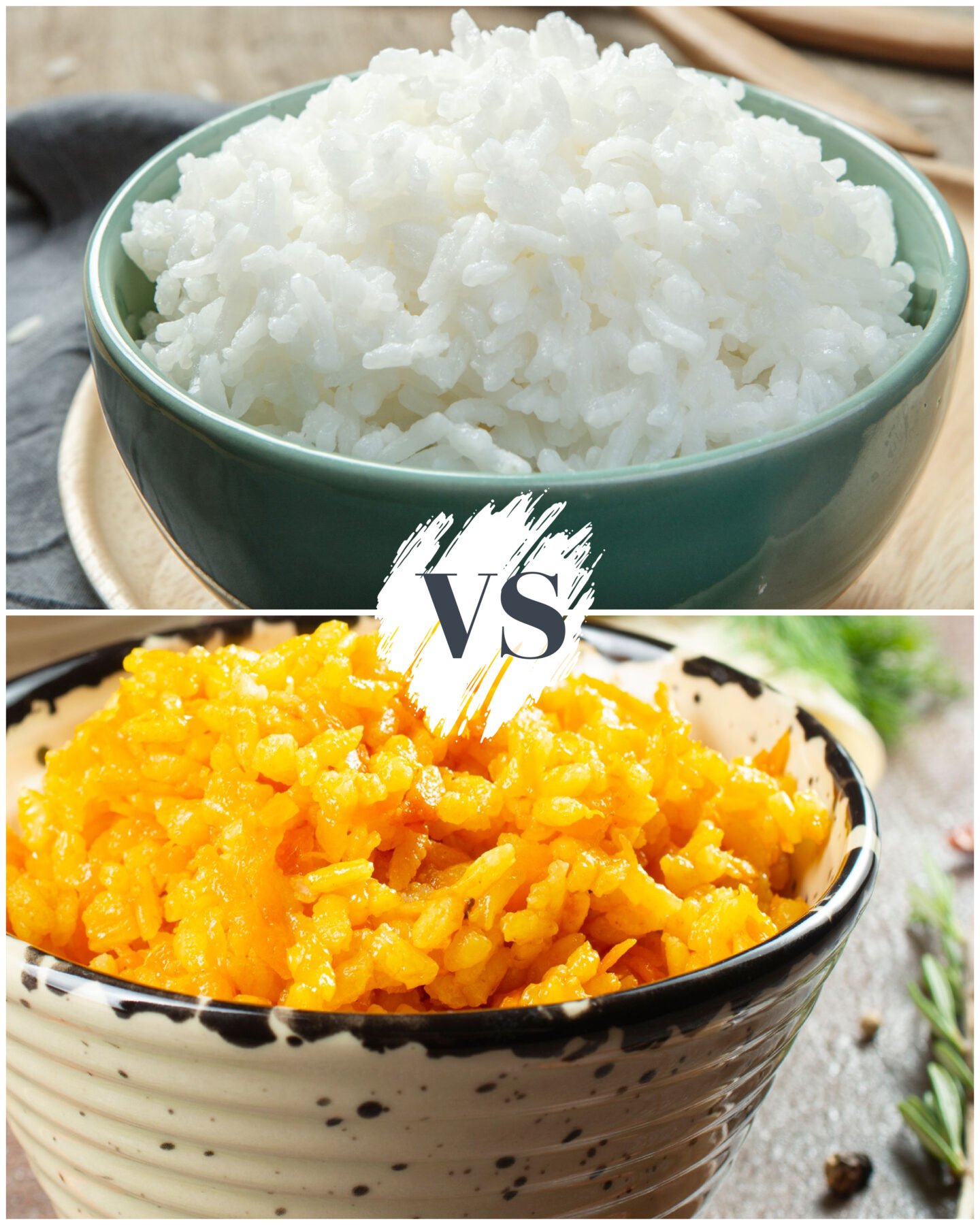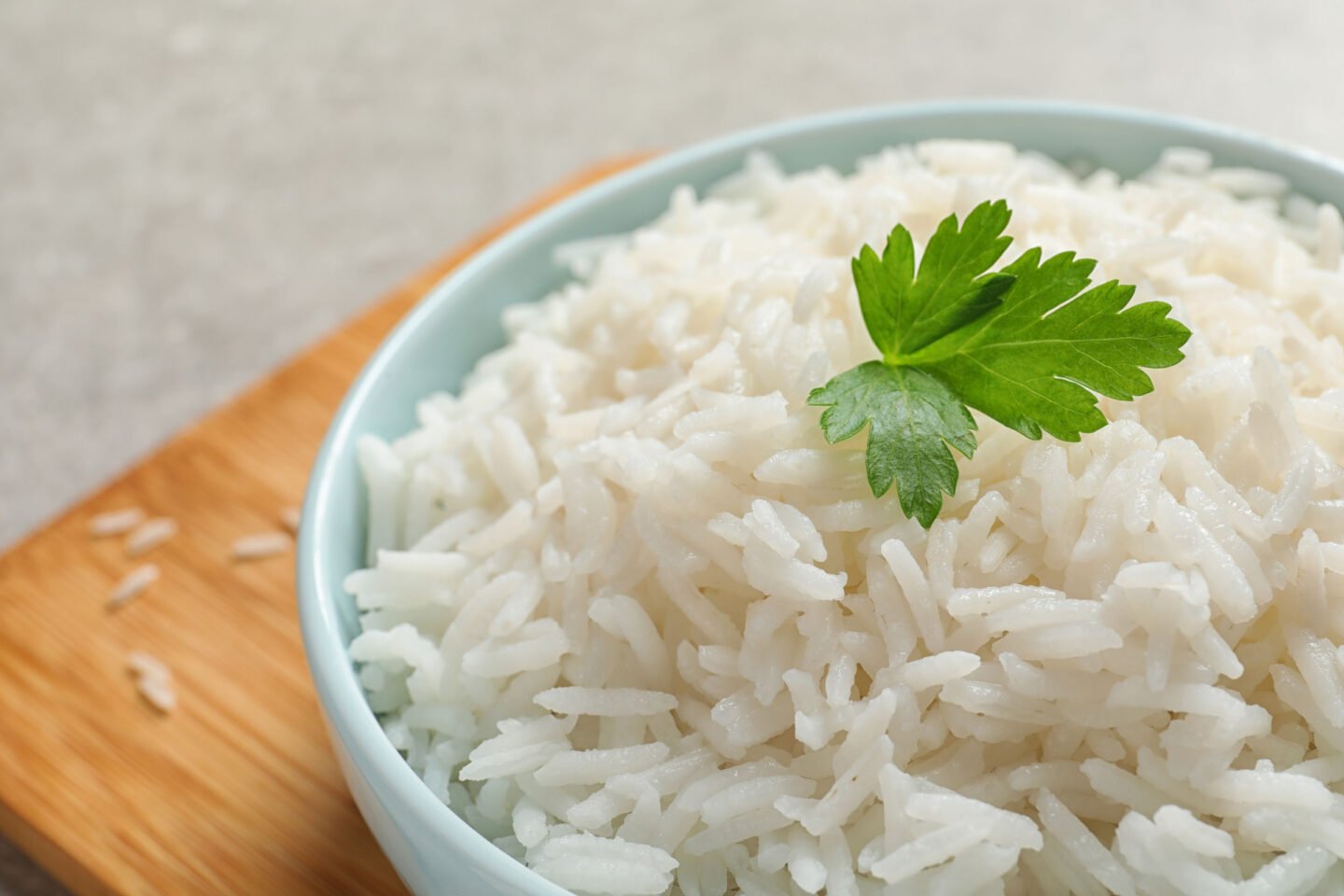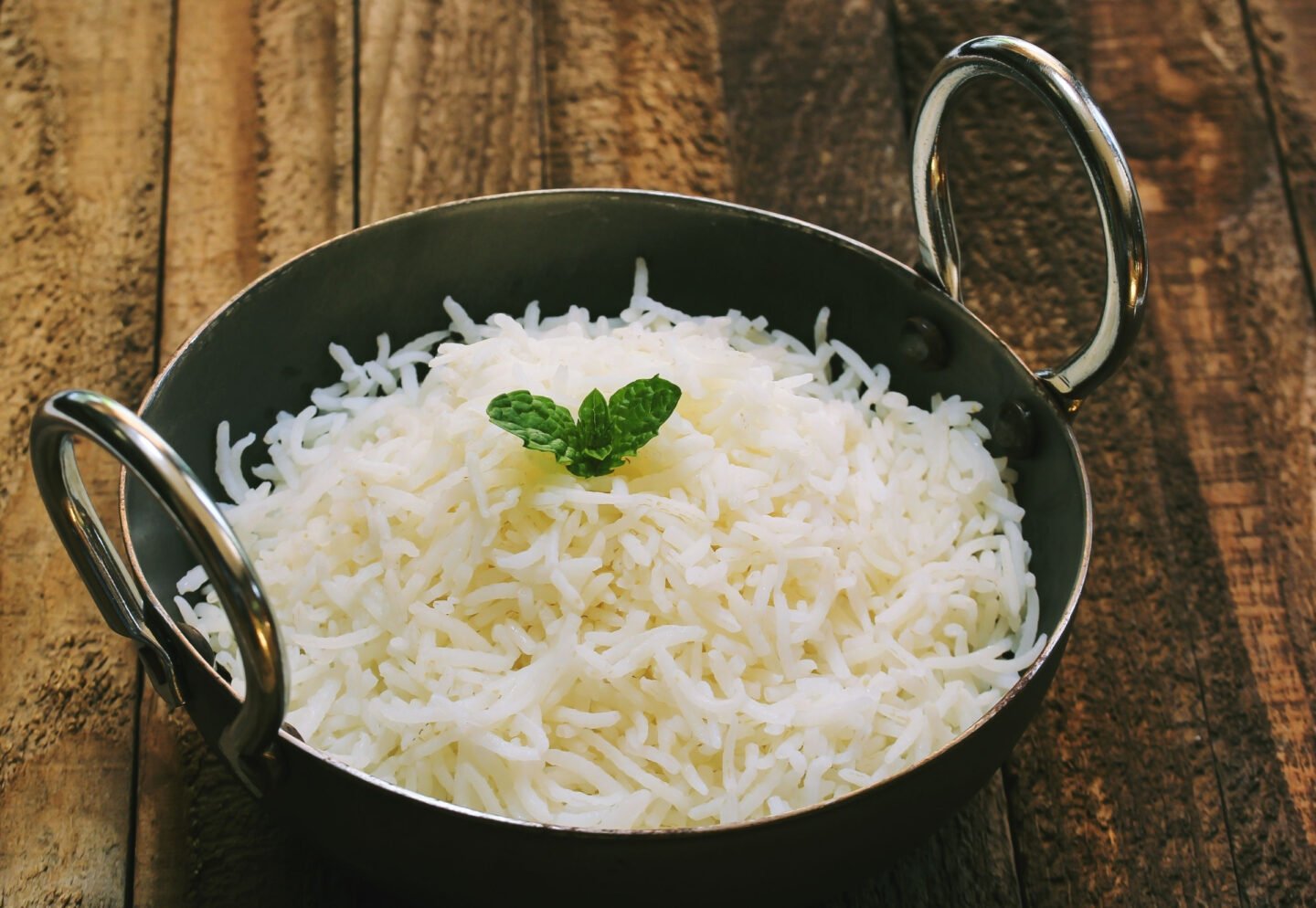The main difference between basmati rice and jasmine rice is their shape and texture; basmati rice grains are longer and more slender with a drier texture, while jasmine rice grains are rounder with a softer and moist texture. Due to these differences, these two rice varieties also have different uses.

Since both are long-grain rice varieties, they have similarities that make people mistake one for the other. However, they are different rice varieties and have subtle yet significant differences. Read on to learn about the origin, appearance, flavor, texture, nutrition, and uses.
Table of Contents
Quick Comparison
| Basmati | Jasmine | |
|---|---|---|
| Type of rice | Long grain | Long grain |
| Origin | India/Pakistan | Thailand |
| Cooked Characteristics | Fluffy, dry texture with aromatic flavor and nutty undertone | Moist, plump sized rice with fragrant aroma of jasmine. |
| Recommended dishes | Pilaf, rice salad, curry, served on its own with saffron | Thai curries, rice mounds, as a side dish. |
| Preparation | Soak for 30-60 minutes | Wash and drain off water |
Quick Tip
Have you ever thought about buying a rice cooker to make life easier in the kitchen? Check out our review of the best Korean rice cookers to make an informed decision.
Basmati and jasmine rice are both long-grain white varieties that have a similar appearance. They also share similar aromatic properties, although there are subtle differences. You could substitute one rice for the other without having a recipe melt-down.

Popular Cuisines
Basmati: Indian, Pakistani, Middle Eastern.
Jasmine: Southeast Asian cooking.
The Origins
Basmati rice originated from India and Pakistan and is grown in substantial volumes around the Himalayan foothills. This food staple was initially taken by food traders and sold through the Middle East before eventually becoming used worldwide.
Jasmine rice came from Thailand originally and was grown for the Kingdom of Siam. Over time, new variations of jasmine rice were produced in other countries such as Vietnam and Cambodia.
Cooked Flavor and Texture
Cooked basmati has a fluffy, dry texture with aromatic flavor and aroma. Basmati has a nutty undertone. The grains extend in length once cooked and don’t clump together.
Jasmine rice, once cooked, is moist and plumper in size and releases a fragrant aroma of jasmine. Jasmine has a slightly less pronounced flavor than basmati with a more floral undertone.

Recommended Dishes
Both types of rice could be used interchangeably in a saucy dish and most wouldn’t know the difference. Each variety does have its uses, though.
Basmati grains remain loose once cooked and make an excellent addition to pilafs, rice salads and curries or simply serves on its own with saffron.
Jasmine rice tends to gently clump together but not enough to make the rice appear stodgy. This feature makes jasmine ideal for use with chopsticks – delicious with Thai curries or for creating an impressive looking rice mound.
Size of Grain
The visual appearance of basmati and jasmine rice is very similar with both being long grain and white. Jasmine rice is a little shorter and rounder. Once cooked, basmati extends in length and is visibly longer than jasmine.
Nutrition
We’ve included the nutritional tables for jasmine and basmati rice below. They have similar amounts of protein, fat and carbohydrates.
One more obvious difference is the glycemic index of each type of rice. Jasmine is higher at 68-80 versus basmati having a 52 GI.
| Basmati Rice (1 Cup) | Jasmine Rice (1 Cup) | |
|---|---|---|
| Calories | 220 | 250 |
| Total Fat | 3g | 2.5g |
| Saturated Fat | 0g | 0g |
| Total Carbohydrates | 44g | 52g |
| Sugar | 0g | 0g |
| Protein | 6g | 5g |
Keep in mind these are average values and can range higher or lower depending on the brand.
Preparation

Basmati: Soak the rice for 30 to 60 minutes, allowing the water to be absorbed. The end result will be more evenly cooked rice. For best results, rinse and steam.
Quick Tips
- Add a splash of oil or butter to help keep the grains from clumping.
- Additional herbs and spices like bay leaves or saffron will enhance the depth of flavor in the rice.
Jasmine: Wash and drain off water prior to cooking to remove any excess starch or dust. Boil or steam the rice for best results.
Related reading:
What is the difference between Indian and Japanese curry?
Final Roundup
When it comes to rice, basmati and jasmine rice are both commonly found in the supermarket and they look quite similar before being cooked. Personally, I really enjoy both of these types of rice. When cooking Indian, I'll often use basmati whereas jasmine is the preferred option for Thai cuisine.
When it comes to rice, there aren't too many hard and fast rules. Swapping one for the other is okay and few would pick up that you've altered the recipe. But keep in mind that they have some subtle differences which makes each more suitable for certain dishes.
Most importantly, jasmine tends to lightly clump, so it's not the best option for tossing into high heat stir-fry dishes. Basmati has many uses, but it works well in dishes where you want the rice to stay separated, such as a rice salad.

Leave a Reply